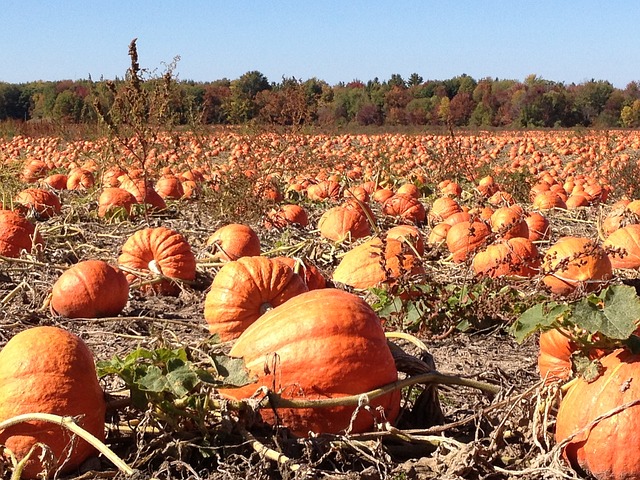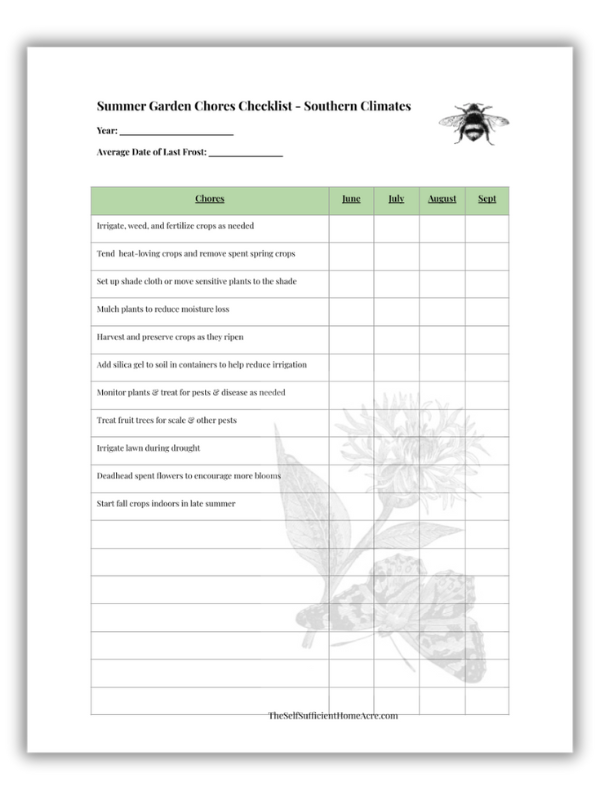Choose The Best Pumpkin Varieties for Your Homestead!
Doing a bit of research to help you choose the best pumpkins for your homestead is fun and rewarding. It doesn’t take much effort and it’s entertaining to look through seed offerings with the kaleidoscope of colors, shapes, and sizes. Here are some considerations to keep in mind as you get ready to order seeds for your very own pumpkin patch!


Heirloom vs Hybrid
Heirlooms, or open-pollinated varieties, allow you to save seed each year and grow the same variety of pumpkin over and over again.
Perhaps you prefer to grow an heirloom variety for historical interest or to help preserve the genetics. Quite a few customers are interested in purchasing heirloom vegetables, so you may have a market for old-world pumpkins in your area.
/https://media.azurestandard.com/files/8d126ad1-945a-43ac-a885-be2223687a0d)
Hybrids are a cross of two or more varieties and the seeds produced this year will not produce the same variety of pumpkin next year.
If you would like to save seeds each year, choose an heirloom variety for your pumpkin patch. You’ll most likely need to hand pollinate the flowers and tape them shut to produce heirloom seeds unless there is only one variety of pumpkin, squash, or gourd in the area. (Pumpkins, squash, and gourds may cross-pollinate.)
Seed companies have produced a plethora of hybrid pumpkin varieties with warts, stripes, and unusual colors. These unusual varieties sell well at roadside stands and farmer’s markets.
As an Amazon Associate, I earn from qualifying purchases.
Is Your Growing Space for Pumpkins Limited?
Homesteaders with a lot of space may not be concerned that pumpkins spread out, but urban and suburban gardeners are unlikely to have room for these space hogs. Small space gardeners can choose bush varieties, such as Spirit hybrid pumpkin, with vines 4 to 6 feet long. Pumpkins can also be grown up a trellis to save space.
Space Saving Pumpkin Varieties
- Crunchkin Pumpkin
– (F1 hybrid) Mini, flattened, ribbed, orange pumpkins, bush habit
- Racer Pumpkin
– (F1 Hybrid) Mid-size, orange, round, pumpkin, short vines
- Flatso Pumpkin – (F1 Hybrid) Small, flattened, orange pumpkins, semi-bush habit
- Kakai
– (Open Pollinated) Small, round, orange and green striped pumpkins with hull-less seeds, semi-bush habit
- Lechebnaya
– (Open Pollinated) Small to Mid-size, round, grey-green pumpkins are decorative and good for cooking, bush habit
- Wee-B-Little
– (Open Pollinated) Mini, round, orange pumpkin, semi-bush habit

What’s Your Pumpkin’s Purpose?
Whether you want pumpkins for jack-o-lanterns, to make pies from scratch, or you want to set up a Pick-Your-Own pumpkin stand, there is a variety for you. In fact, you may have trouble picking just one variety you want to grow!
Halloween Jack-o-Lantern’s
You’ll want a nice-sized pumpkin that doesn’t have very thick walls for carving. These varieties make great pumpkins for your home garden, farmers’ markets, Pick-Your-Own patches, and roadside stands.
- Connecticut Field – (Open Pollinated) Medium-large, round pumpkin
- Howden’s Field
– (Open Pollinated) Medium-large, uniformly shaped pumpkin
Pumpkins for Fall Decoration
There are so many interesting colors, shapes, sizes, and markings in pumpkin and squash varieties that it’s difficult to pick just one. Why not choose a variety of different pumpkins to decorate your home for autumn? Many of these decorative fruits sell very well at farmers’ markets, apple orchards, Pick-Your-Own patches, and roadside stands. Here are some interesting and decorative varieties that are sure to attract attention!
- Warty Goblin
– (F1 Hybrid) Small to medium-sized, round pumpkins with green ‘warts’ that stay green for several weeks after harvest
- Rouge Vif D’ Etampes – (Open Pollinated) Medium to large, flattened, reddish-orange pumpkin that is also very tasty
- Musquee De Provence – (Open Pollinated) Medium, flattened, ribbed, copper brown pumpkin with fine flavor
- Jarrahdale – (Open Pollinated) Small, grey-blue, ribbed pumpkin with excellent eating qualities
- Flat White Boer – (Open Pollinated) Medium-large, flat, white pumpkin with excellent eating qualities
- Baby Boo
– (Open Pollinated) Miniature, white pumpkin
- ONE TOO MANY
– (Open Pollinated) Orange and white striped, medium pumpkin that resembles a blood-shot eye
- Porcelain Doll
– (F1 Hybrid) Miniature, ribbed pumpkin with unusual pink color
- Galeux d’Eysines
– (Open Pollinated) Flattened, light orange squash that looks like a pumpkin with peanut-shaped warts. Good to eat
Pies, Baking, and Cooking
Most pumpkins may be cooked and used in pies, bread, muffins, and other goodies. However, for fine-grained flesh that tastes great and isn’t overly moist, try these varieties:
- Winter Luxury Pie – (Open Pollinated) Small, round pumpkins with fine grain and great flavor
- Small Sugar – (Open Pollinated) Small, round pumpkins with fine grain and flavor. Aka ‘New England Pie Pumpkin’
- Dickinson – (Open Pollinated) Medium to large, tan pumpkin that is great for cooking and canning
- Seminole – (Open Pollinated) Small, tan pumpkin with fine, dry flesh. Insect and disease resistant
- Rouge Vif D’ Etampes – (Open Pollinated) Medium to large, flattened, reddish-orange pumpkin that is also very tasty
- Musquee De Provence – (Open Pollinated) Medium, flattened, ribbed, copper brown pumpkin with fine flavor
- Jarrahdale – (Open Pollinated) Small, grey-blue, ribbed pumpkin with excellent eating qualities
- Flat White Boer – (Open Pollinated) Medium-large, flat, white pumpkin with excellent eating qualities
- Galeux d’Eysines
– (Open Pollinated) Flattened, light orange squash that looks like a pumpkin with peanut-shaped warts. Good to eat
Giant Pumpkins
Want to grow a behemoth to show at the fair? Or maybe you’d like to decorate your yard with a giant pumpkin. Your only problem may be moving a pumpkin that weighs several hundred pounds. For the largest pumpkins, allow one fruit per vine, pinch end of vine to direct energy to fruit, water and fertilize heavily.
- Big Max – (Open Pollinated) Extra-large, round, orange pumpkins that may weigh 100+ pounds. Can also be used for pies
- Atlantic Giant – (Open Pollinated) The largest pumpkin variety, commonly produces 200 – 300 pound fruits, and larger!
Pick the Best Pumpkins for Your Homestead!
There are so many different pumpkins to choose from, it may be difficult to narrow down your list. If you have a lot of garden space and you’d like to sell the extras, why not plant a nice-sized patch of field pumpkins for Halloween and several smaller patches of decorative, edible, and long-lasting pumpkins?
You’ll have some to decorate your yard for autumn, some for pies and baked goods, and enough extra to share with friends or sell to raise some ‘seed’ money for next year!
What’s your favorite pumpkin to grow? Tell us in the comments!
As an Amazon Associate, I earn from qualifying purchases.














Picked a few Jack Be Littles thus morning, and keeping an eye on my ripening big beauties!
Love pumpkin season!
Pumpkins are so much fun to grow! I have a few hidden in the leaves and I can’t wait to harvest them. 🙂